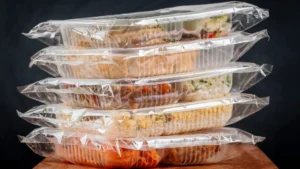The exquisite flavours of wonderful foods and images of swaying palm trees are frequently evoked when people think of Southeast Asia. Perhaps not readily apparent to travellers to ASEAN is that an important ingredient of Southeast Asian cuisine is palm sugar – sugar made from the sap of palm trees.
Popular throughout Southeast Asia, the caramelly flavours of palm sugar are exploited in sweets and desserts and add depth and richness to savoury dishes such as curries. Palm sugar offers an important counterpoint to the saltiness of fish sauce and shrimp paste and gives a caramel kick to the region’s low-fat salad dressings. It is an essential additive to the som tam (green papaya salads) of Lao PDR and Thailand. The combination of palm sugar and coconut milk is a match made in heaven and is the basis for the Malay/Indonesian dessert sago gula Melaka and many shaved ice treats such as cendol. Palm sugar is also used to produce palm wine and arrack, a type of distilled liquor.
In Thai cuisine, palm sugar is not only used in main courses but also in sweets and desserts; such as, Khanom Tom (sticky rice balls) and Luk Chup (fruit-shaped mung bean). Its sweetness enhances the flavor of curries and rich sauces for many Thai dishes. Some roadside stalls along the highway passing by the peninsula town of Phetchaburi also sell bottles of delicious, fresh sugar palm nectar.
Palm sugar was originally made from the sap of the Palmyra palm, the date palm, or the sugar date palm. It is also now made from the sap of the Arenga pinnata (sugar palm) and the nipa palm. The sap is boiled until it thickens. Palm sugar should not be confused with coconut sugar, which is made from coconut flowers rather than from the trunk of the palm.
You will almost certainly find palm sugar sold in some form at your nearest Asian grocer. It is often sold in coarse brown cakes or lumps, or in pots of sticky granular paste. Dried forms of palm sugar are very crumbly. The colour of palm sugar varies from light golden yellow to rich dark brown. It is minimally processed and tends to be very grainy, but the light molasses or caramel flavour of the sugar is left intact. Sometimes palm sugar is marketed as ‘palm honey’.
A query of your favourite search engine will deliver plenty of recipes that call for palm sugar, from super simple to quite tricky. So go ahead and bring this important flavour of Southeast Asia to your kitchen and dining room. For the real meal deal, however, book a trip to Southeast Asia!







